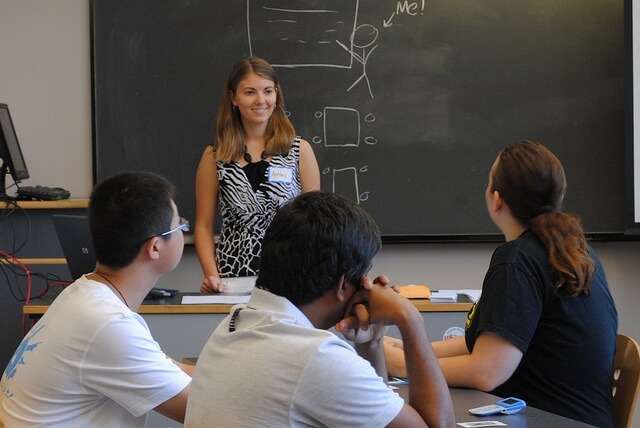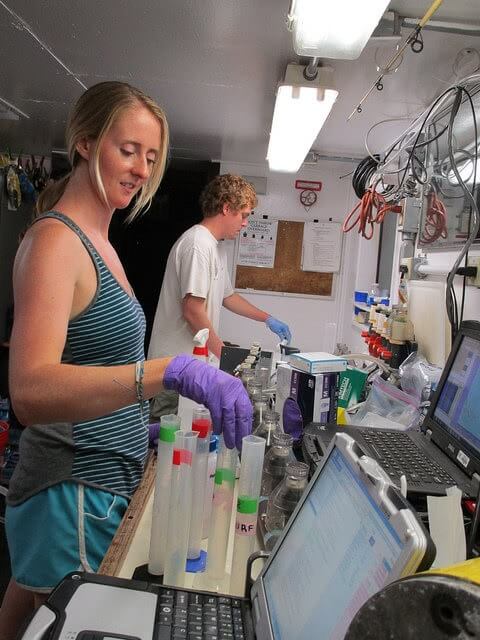Key Takeaway
Becoming a physician assistant (PA) typically takes six to nine years, including earning a bachelor’s degree (preferably in a science-focused or healthcare major), gaining clinical experience, and completing a two to three-year master’s program. Students must also complete clinical rotations and pass the PANCE exam to become certified. PA programs can be traditional (two to three years), accelerated (as little as 26 months), or online/part-time, though clinical rotations are still required in person. The path can be demanding but is ultimately worthwhile.
 Are you considering a role in healthcare, but don’t want to commit to medical school? Then becoming a physician assistant (PA) might be a good path for you. Despite being in the title, PAs are not assistants in the traditional sense; they are qualified medical professionals who diagnose, treat, and prescribe medication to patients with the supervision of a doctor or surgeon. PAs are in high demand, earn a competitive salary, and can work in a variety of healthcare settings, from doctor’s offices to hospitals to emergency medicine.
Are you considering a role in healthcare, but don’t want to commit to medical school? Then becoming a physician assistant (PA) might be a good path for you. Despite being in the title, PAs are not assistants in the traditional sense; they are qualified medical professionals who diagnose, treat, and prescribe medication to patients with the supervision of a doctor or surgeon. PAs are in high demand, earn a competitive salary, and can work in a variety of healthcare settings, from doctor’s offices to hospitals to emergency medicine.
But before you dive into applications, you might wonder exactly ‘what are the course requirements’ and ‘how long doe PA school take?’ It can some rigorous schooling and anywhere from a total of six to nine years to become a PA, but the outcome is highly rewarding. This guide will explore different program options, break down more about the typical length of PA programs, and explain what you’ll learn in PA school. While it is a commitment, the fulfilling career can be extremely worthwhile.
Preparing to Become a PA OR How to Become a PA
The first step to becoming a PA is to earn a bachelor’s degree from an accredited university. PA programs typically accept various backgrounds but a science-focused or healthcare major is recommended. This way, you’ll have taken the prerequisite courses needed for a PA program.
Before enrolling in a master’s program, many prospective PAs gain clinical experience, such as working as a registered nurse, paramedic, or EMT. While there isn’t a specific number of hours required, most graduate programs look for applicants with 1,000 hours of patient care.
Students should apply to an accredited PA graduate school that meets licensing requirements. During physician assistant programs, students take classes like pharmacology, pathophysiology, physical diagnosis, and clinical laboratory science. Additionally, students will need to complete 2,000 hours in clinical rotations that cover family medicine, internal medicine, surgery, and emergency medicine.
After earning a master’s, students must pass the Physician Assistant National Certifying Examination (PANCE). Once completed successfully, students may work under the title of certified physician assistant. The exam must be retaken every 10 years.
Typical Length of PA School
While a master’s program generally takes two to three years to complete, the total time to become a PA can range anywhere from six to nine years. Here’s a breakdown of an average timeline:
- Bachelor’s Degree: Four years
- Clinical Experience: 1,000 hours (This can take anywhere from several months to two years depending on the opportunity. For example, working as an EMT might allow you to accumulate hours quickly, while others, like a CNA, might take longer.)
- Master’s Program: Two to three years, typically including clinical rotations
Types of PA Programs
While you may know the minimum GPA, prerequisite courses, and experience hours required for PA programs, you might not know the details of what will happen once you’re in school. Here’s a few types of PA programs and their curriculum.
- Traditional Programs: This is the most common program and lasts anywhere from two to three years. The curriculum consists of traditional classroom lectures, hands-on training, and clinical rotations where you’ll assist patients under the supervision of licensed physicians.
- Accelerated Programs: These programs can often be completed in as little as 26 months, but it’s important to note that they may be more intensive and require more coursework because of the shorter amount of time.
- Online or Part-Time Programs: For those who need more flexibility in their schedule, an online or part-time PA program might be a good fit. Part-time programs will take longer to complete, while online programs may offer flexibility in scheduling. Clinical rotations are still required and are in-person.
Checklist for Applying to PA Programs
- Review Program Requirements: Each school will have specific requirements for GPA, prerequisite courses, standardized test scores (GRE, MCAT), and clinical experience hours.
- Prepare for Standardized Tests: If submitting test scores is required, you will need to register and study to ensure a strong score.
- Create a CASPA Account: The Centralized Application Service for Physician Assistants (CASPA) allows prospective PA students to apply to multiple PA programs with one application.
- Gather Necessary Documents: You will need to submit official transcripts, letters of recommendation, and prepare personal statements.
- Meet Application Deadlines: Deadlines may vary depending on the programs you apply to, so make sure you plan accordingly, submitting everything on time.
- Practice for Interviews: If you’re extended an interview invitation, it means that you impressed the admissions committee! Whether your interview is online or in-person, one-on-one or with a panel, you can start practicing by answering common questions about yourself, your background, hypothetical situations, your understanding of a PA role, and healthcare.
What Is the Cost of PA School?
The cost of PA school varies from program to program. But generally, students can expect costs to range anywhere from $20,000 – $100,000 per year. This cost includes tuition, as well as living expenses, books, and food. To get a full understanding of how much a PA program costs, it can be helpful to look at the school, location, and in-state vs out-of-state tuition.
What Salary Does a PA Earn?
Physician assistants earn a high salary. According to the Bureau of Labor Statistics, the average PA salary in 2023 was $130,490. The top-paying states for PAs are Nevada ($154,800), California ($153,960), Washington ($152,800), Connecticut ($149,300), and Alaska ($148,480).
Tips for Succeeding in PA School
To help ease into the transition of PA school, here are some tips that can make your life easier:
- PA school can come with a lot of added stress, so exercise, eat healthy, and schedule time to relax. You want to make sure you are physically and emotionally healthy so you can do your best.
- Discuss boundaries with friends and family around how much free time you’ll have.
- Get plenty of sleep.
- There’s a lot to learn! You will spend a lot of time studying.
- Keep all of your notes organized and study often for exams.
- Manage your time well. You do not want to procrastinate or you will get behind.
- Study with your classmates. It can be really helpful and less isolating during this time.
- Always be on time and prepared for class and clinical rotations.
- Ask for help from classmates or professors when you need it.
Opportunities in healthcare continue to grow. As a PA, you don’t have to attend school as long as a doctor, it’s one of the highest-paying medical jobs, and it is a highly rewarding career. Becoming a PA can be a long process, but investing the time and hard work now can be a worthwhile investment for your future. Good luck as you enter one of the most challenging, yet rewarding, experiences of your life!
Wondering which career may be a good fit for you? Try College Raptor’s Career Finder to explore over 1,000 careers and discover colleges that are a great fit. See job openings, typical salaries, and learn the education and skills required for a certain career.






